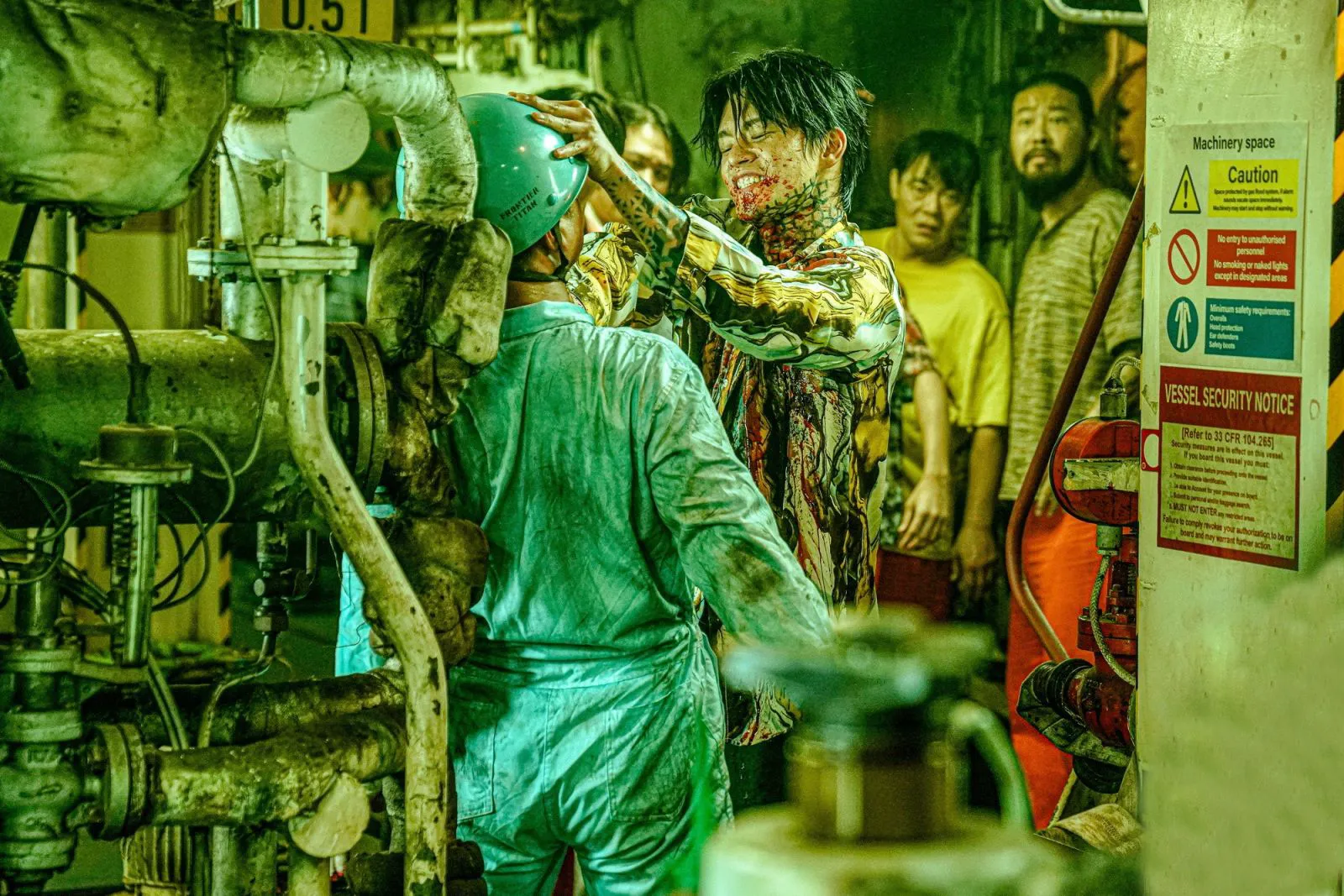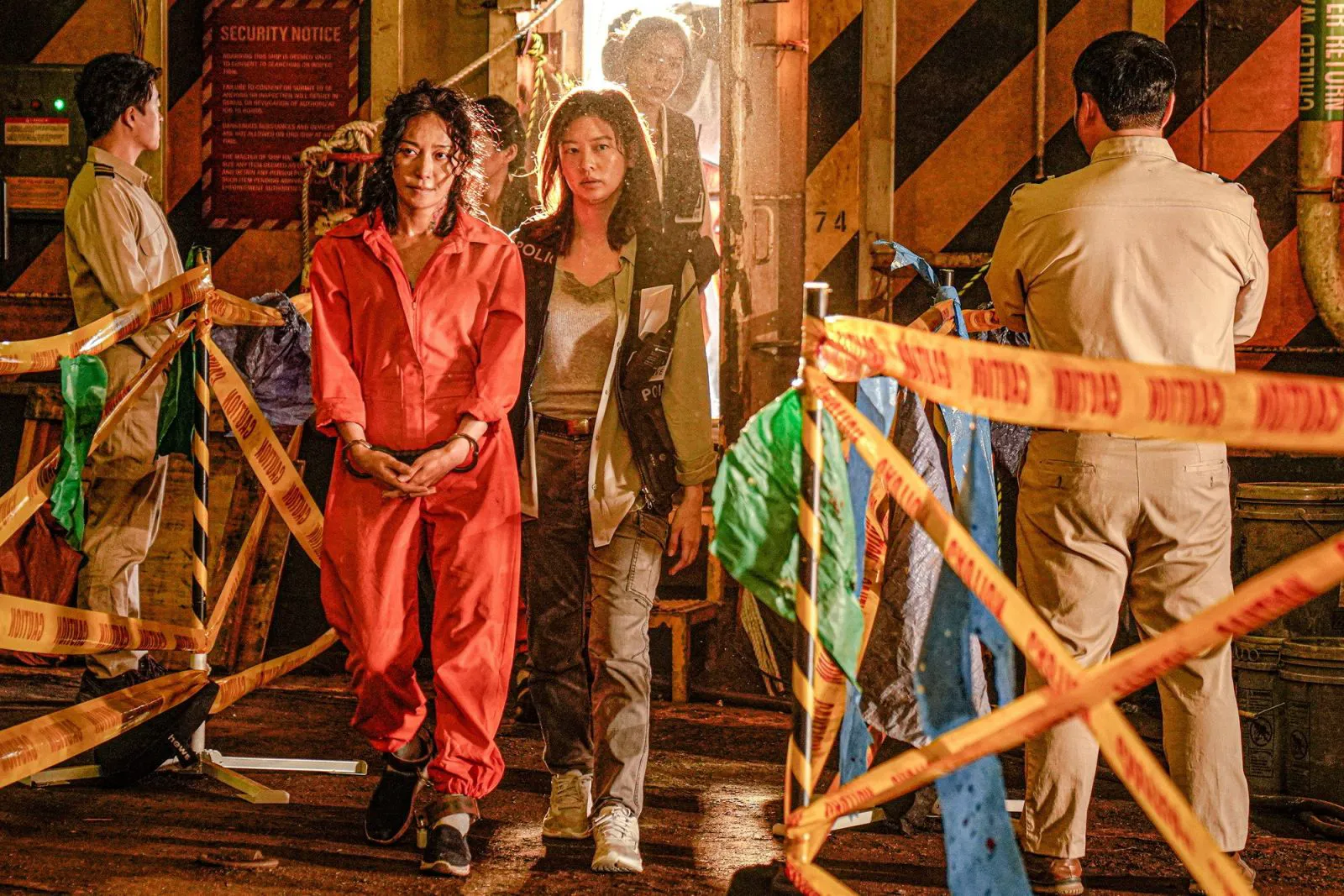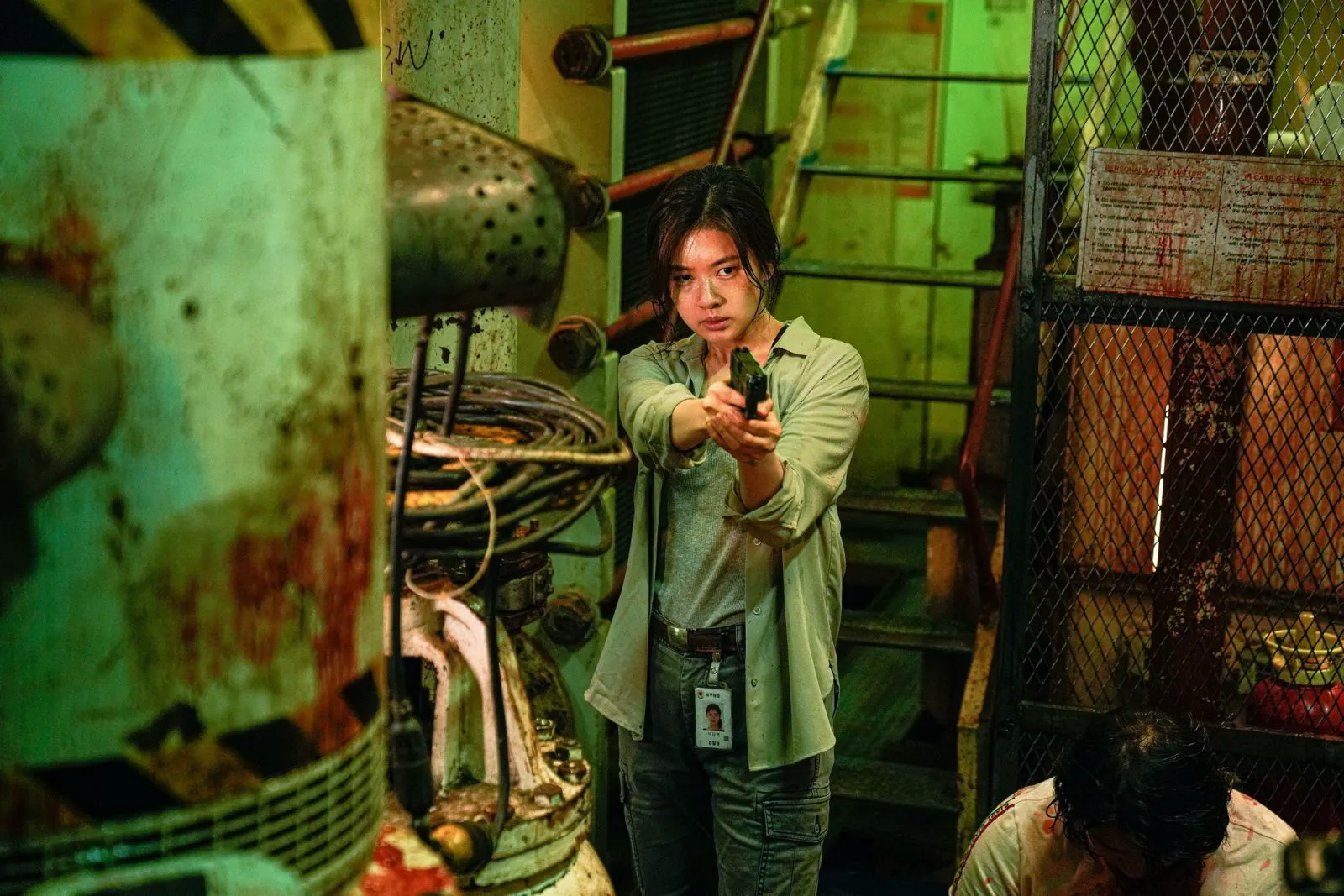A group of hardened criminals is being transported from the Philippines to Korea on a cargo ship. To prevent any trouble, they are guarded by a team of highly trained special forces. However, few know about a secret logistical mission hidden in one of the ship’s compartments. The real cargo is a deadly mutant, created in a laboratory in 1943, ready to destroy anyone who crosses its path.

Seo In-guk as Park in “Project Wolf Hunting”
Korean Cinema’s Unstoppable Force
One can only explain the seamless operation of the Korean film industry by the unprecedented creative surge of its filmmakers. They confidently navigate genres once dominated by Americans, borrowing the best, creating bizarre hybrids, and mastering the art of reaching international audiences. “Project Wolf Hunting” (a more down-to-earth title than its international release, “The Ship to Busan”) is a cinematic Frankenstein, stitched together from many pieces, much like its main attraction – a mutated man abused by Asian lab technicians.
From Action Thriller to Horror Carnage
The film begins as a high-octane action movie in the vein of “Con Air”: prisoners run wild, seize control of the ship, and eliminate the elite guards. The characters are all carefully selected: extremely dangerous, tattooed, and prone to excessive violence (Seo In-guk deserves special attention for his role as a brutal killer). But then the film takes a sharp, though not entirely unexpected, turn – it transforms into a horror movie where an invincible monster from the past century turns everyone who miraculously survived on the ship into mincemeat.

Jung So-min as Lee in “Project Wolf Hunting”
Of course, director Kim Hong-sun utilizes the full expressive power of Korean dismemberment: the mutant crushes heads with its feet, flooding the deck with geysers of blood, turning living matter into lifeless with a single swipe, and sharp objects continue the grammar of the horror carnival. But this, of course, does not qualitatively affect the plot – we have already understood from other films that, according to Korean filmmakers, a person has not 5 liters of blood, but all 15. In addition to the gruesome guignol, the authors leave practically no room for inventive maneuver – in this claustrophobia of the ship, the plot is limited to monotonous runs through cramped spaces.

Jung So-min as Lee in “Project Wolf Hunting”
The creators are not particularly concerned about the characters either: refusing to bother with elaboration, the authors briskly cross them out as the runtime progresses. This functional approach is justified to some extent – bodies among bodies wave weapons and knives until the heavy foot of the Asian “Frankenstein” falls on each one. And so, amidst this script confusion and empty splattering of blood, there is indeed one funny moment: a flashback directly from 1943, when underground experiments of World War II unleashed evil upon the world. The scene of the monster’s birth is somewhere between a daring exploitation and the superhero origin story of Wolverine.
Final Verdict
Otherwise, “Project Wolf Hunting” is two hours of extreme carnage, almost unburdened by plot and, it seems, reveling in its own barbaric aesthetic. Two films in one, but with a losing combo: the action movie about the ship’s capture decisively lacked drive, and the horror movie about the monster lacked a banal sense of proportion.